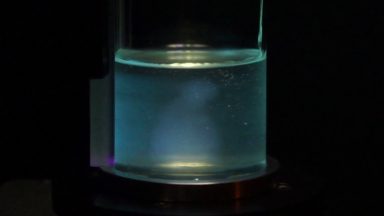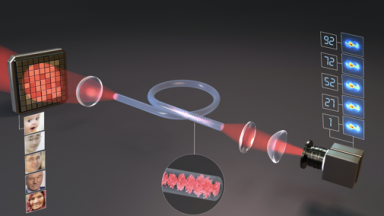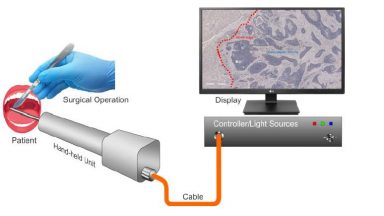Current projects

High resolution Retinal Imaging with TOPI
Retinal diseases are the major cause of blindness in industrialized countries. For example, an estimated total of 196 million people will be affected by age related macular degeneration in 2020. While tremendous effort is being made to develop novel therapeutic strategies to rescue retinal neurons and the retinal pigment epithelium, optimal means for evaluating the effects of such treatments are still missing.

Volumetric 3D printing
Most additive manufacturing methods such as fused-deposition modelling, selective laser melting or stereolithography create objects sequentially one layer at a time. This type of process imposes limitations on the shapes and the materials that can be printed. For example, overhanging structures need additional supports during printing, and soft or elastic materials are difficult to print since they deform as new layers are added.

Optical Implementation of Neural Networks
Currently, neural networks are implemented on electronic chips such as central processing units (CPUs) and graphics processing units (GPUs). However, computational algorithms and more specifically neural networks were also realized with optical systems even though they are far from being as popular as their electronic counterparts. In our laboratory, we demonstrated spatiotemporal nonlinearities inside multimode optical fibers can be used as a neuromorphic neural network and its performance can be comparable to digital neural networks.

S4S project – H2elios Neurocams
Accurate solar irradiance forecasting at various time horizons, from minutes to months, is crucial for managing energy storage, dispatch, and trading. This research uses publicly available webcam images and traditional weather forecasts to train neural networks for forecasting solar irradiance, focusing on the challenging 2 to 4-hour time horizon. The goal is to enhance EPFL’s ability to predict on-campus PV power production, thereby improving day-ahead energy resource dispatch plans. Deviations from these plans can result in substantial penalty charges. To achieve better adherence to dispatch plans, energy storage technologies like Li-based batteries and power-to-gas systems will be employed. This forecasting method can be scaled up from local to regional and national levels.

Minimally invasive deep-tissue endoscopy
Head and Neck Cancers (HNC) cases approach a million diagnoses each year worldwide. Treatment of HNC involves surgical resection, which is deemed complete if the biopsy comes back from histopathology with clear (negative) margins. Positive surgical margins leave microscopic residues of cancer in the wound bed and require a second resection, as this minimal residual disease in turn gives rise to local and possible non-lac recurrences, and consecutive death of the patient. A positive surgical margin increases the risk of local recurrence by 90%, reducing the overall survival expectancy by 50% and increasing all-cause mortality at 5 years by 90%. There is a need for a point-of-care method to map the exact tumor margins as a 3D model of the tumor before resection, and detection of residual malignant cells in the wound bed in real-time.

Boosting Two-photon polyermization with single-photon pre-sensitization
Photopolymerization-based additive manufacturing offers a powerful route for rapid production of complex three-dimensional structures. However, it faces a tradeoff: single-photon absorption (1PA) enables fast polymerization and high throughput but lacks resolution, whereas two-photon absorption (2PA) delivers sub-micron precision at the cost of speed. To address this limitation, we propose a method combining 2PP and one-photon absorption to leverage the complementary strengths of both mechanisms. A continuous-wave (CW) laser at 405 nm is used to pre-sensitize the resin via 1PA, rapidly reaching the polymerization threshold, followed by 2PA using a tightly focused femtosecond (fs) laser beam at 780 nm to provide remaining energy needed to surpass threshold and solidify the resin. The material is only polymerized at the intersection volume of two light sources. This sequential excitation approach significantly affects voxel growth kinetics, lowering the energy threshold and accelerating the polymerization.